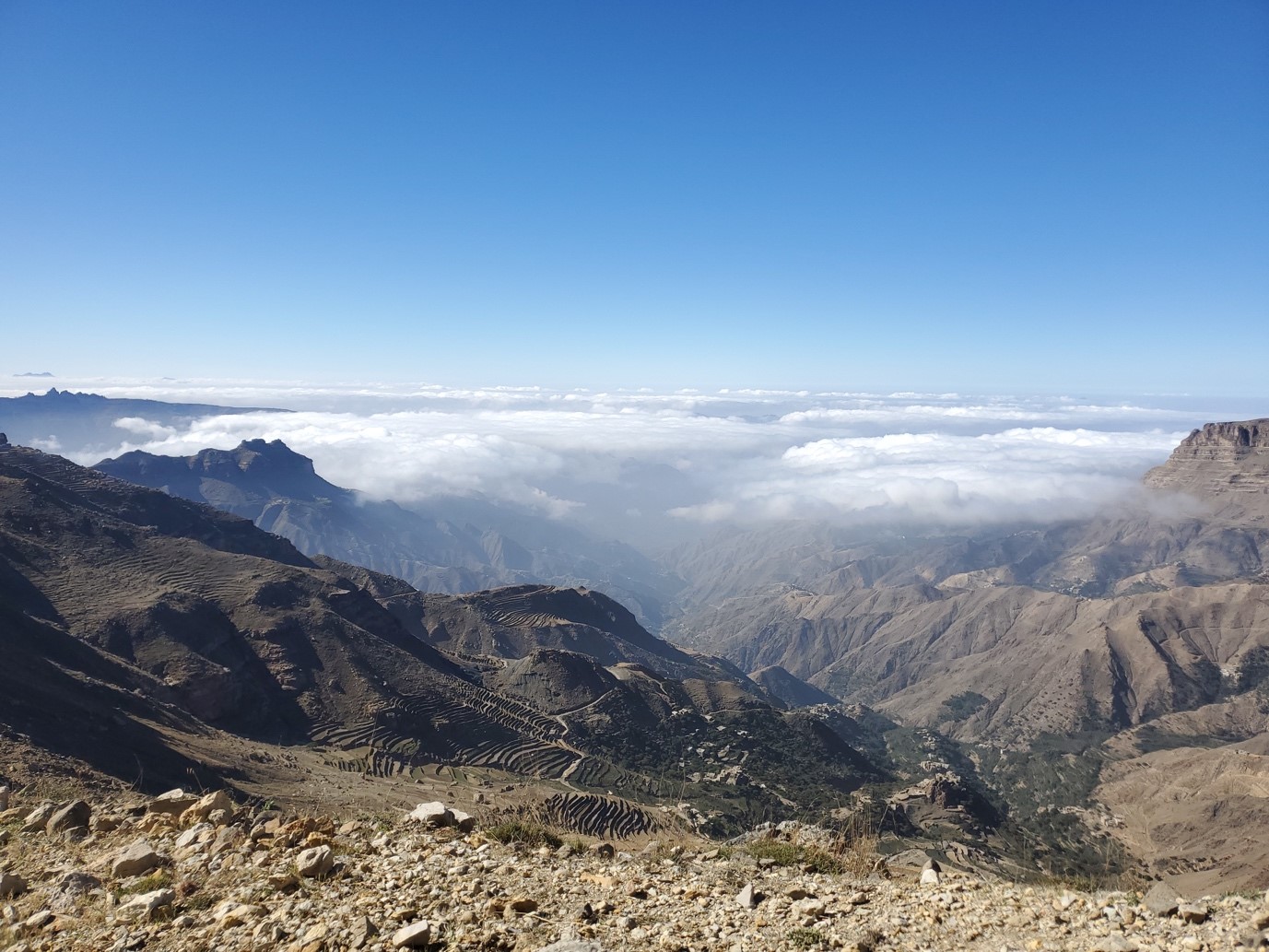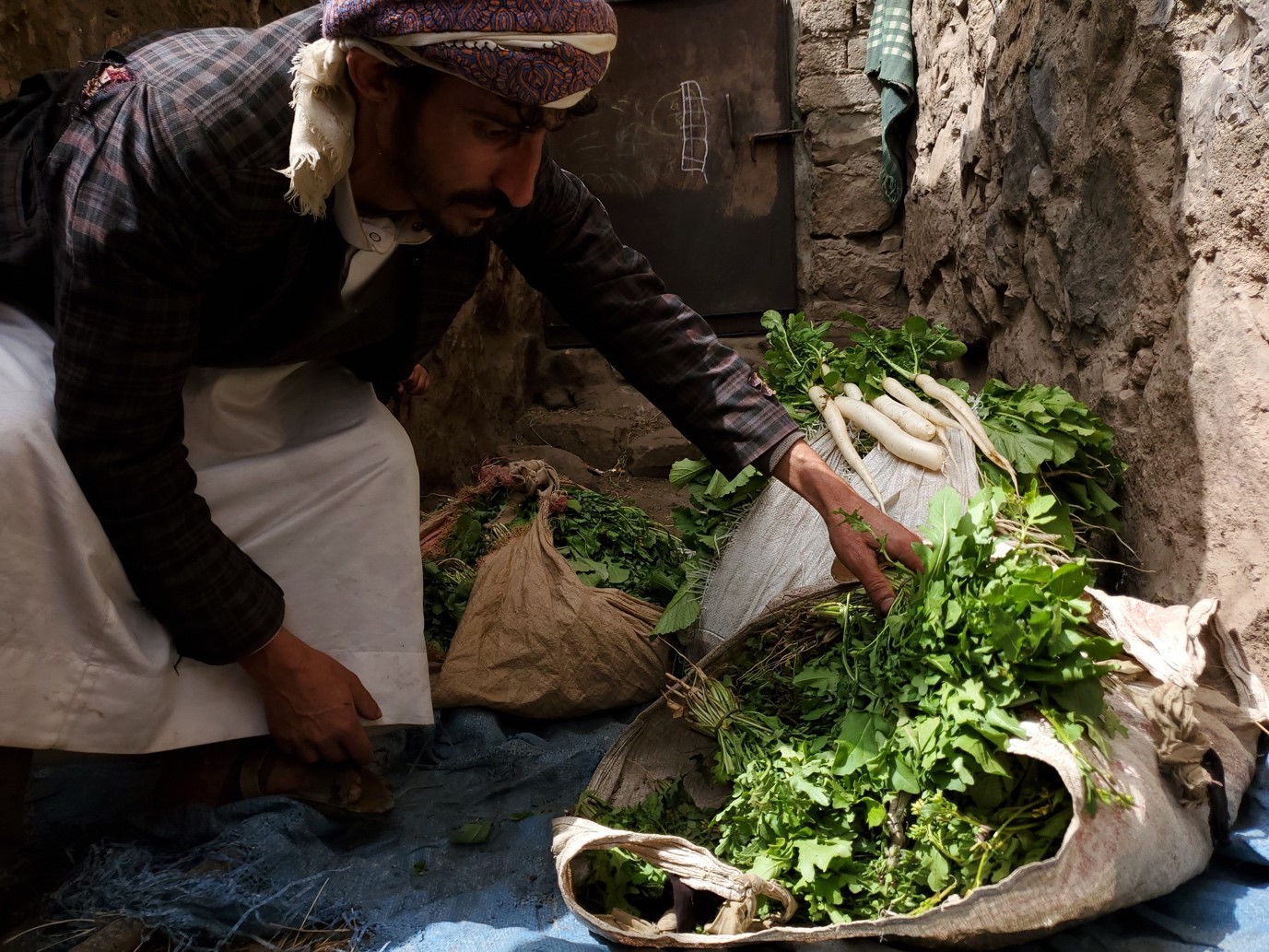In between high green mountains, a steep gorge and white water streams lies Al Joroof village of Maswar district, Amran governorate in northern Yemen. It is a thrilling landscape. Most of the villagers descend from poor families that depend on agriculture as their main source of income.
Yemen has become increasingly unstable since the conflict escalated dramatically in mid-March 2015, severely disrupting the economy, including the agriculture sector, leading to the collapse of essential services and exhausting people’s coping mechanisms.
The villagers of Al Joroof have learned about the intricacies of farming from their ancestors. “Like the rest of the villagers, I have been a farmer since my childhood,” says Mohammed Hassan, a 45-year-old farmer. “The money we used to earn before the war allowed us a decent living, but after the outbreak of war, the price of the seeds skyrocketed and the devaluation of the national currency forced many farmers to abandon commercial cultivation on agricultural land. We were powerless.”



